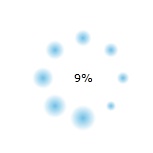The Waiting is the Hardest Part: Why Map Portals Don’t Work, Part V
by Brian Timoney
“Why Map Portals Don’t Work” is a five-part exploration of why the dominant visual grammar of GIS interfaces serves its public audience so poorly and continues to diverge from the best practices found most everywhere else on the web. Read Part I, Part II, Part III, Part IV. On February 27th, I will be joining James Fee for an online conversation about this series at SpatiallyAdjusted.com.
What’s worth waiting for on the web?
Search Twitter for “Hulu ads” and see how much folks enjoy just sitting through a brief ad to get to high quality broadcast television content.
Then imagine what is going through your users’ minds while your map portal is loading. Puzzlement? Irritation? Or a sense of eager anticipation?
You know which it isn’t.
And why exactly, is all of that prolonged loading and plugin-requiring necessary? To push content and functionality of little interest to the vast majority of users. Because makers of map portals for the general public fundamentally misunderstand what users want. They want rapid search-and-retrieval with their results contextualized on a map. The map plays a supporting role–it’s not the lead actor. So if you’re forcing your users to interact with toolbars and map navigation before they get their answer, you have your users’ priorities backwards.
Adobe, the makers of Flash and Flex, has (had?) a marketing pitch about using their products to author “immersive” web experiences. And as hardworking geospatial professionals, who doesn’t want to author an immersive experience? For users, however, immersion feels a whole lot like being lost and confused. They want your site to work like the rest of the web where they might hit a dozen or more sites in quick succession—gleaning a fact here, an opinion there, and hopefully an OMG hilarious cat video somewhere else. And as we mentioned in a previous post, the 10-15% of your users craving an immersive map portal experience already have Google Earth: give them a KML link and send them on their way.
So let’s flip the script and instead of structuring our web mapping experience around an inappropriate desktop GIS idiom, let’s take the value of our users’ time as the guiding principle:
- How quickly can you deliver parcel/assessment info to a property owner?
- How quickly can a parent moving to your municipality find the nearest elementary school?
- How fast can you show an investor the ten most recent commercial property transactions in your city?
Previous posts in this series have detailed specific techniques for focusing user engagement based on actual map usage data. But even without metrics, ask yourself the hardest question of all: would you visit your own map portal if there was a simpler, faster alternative? The 8th most trafficked website in the US is Craigslist. It’s ugly, it’s crowded, it’s literally nothing but hyperlinks. But millions everyday without training, without reading PDF Help documentation, find it useful.
Useful.
Dare to turn away from over a decade of misguided map portal habits and create something useful.
—Brian Timoney


